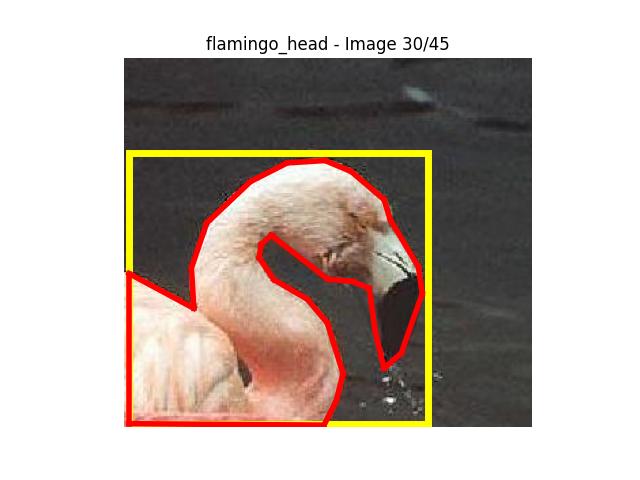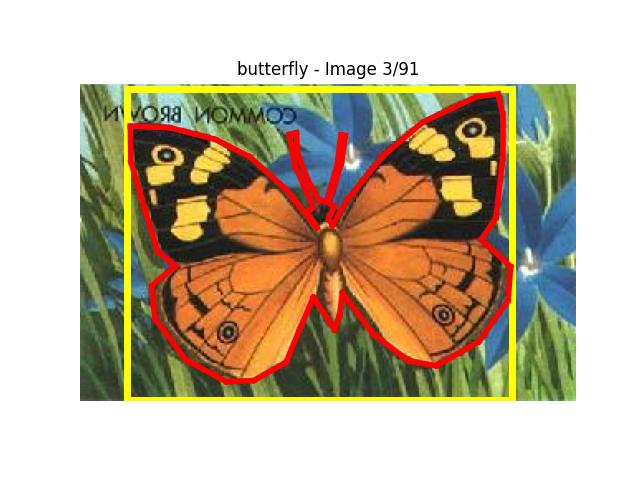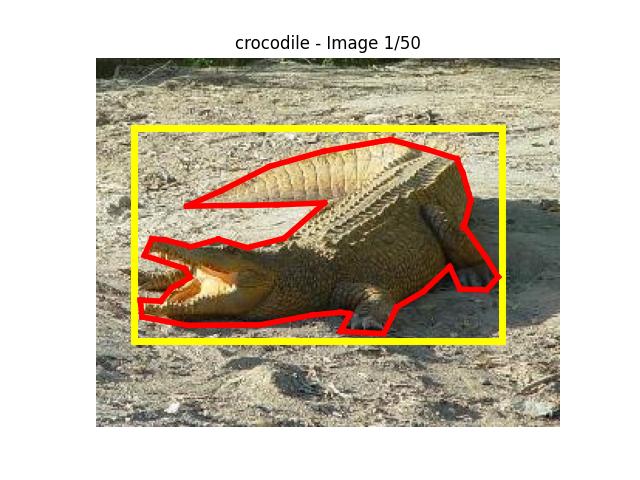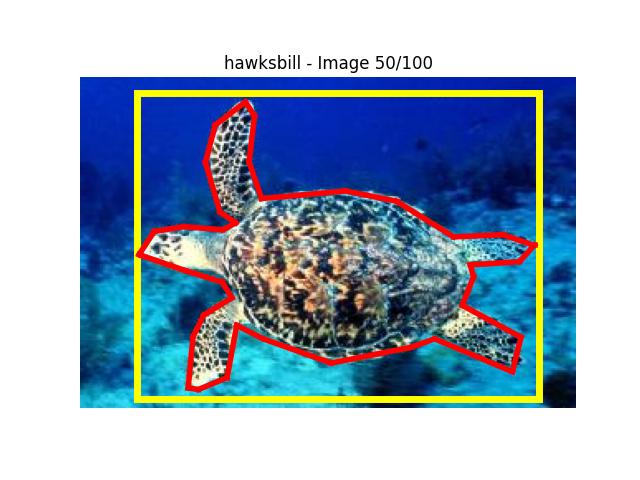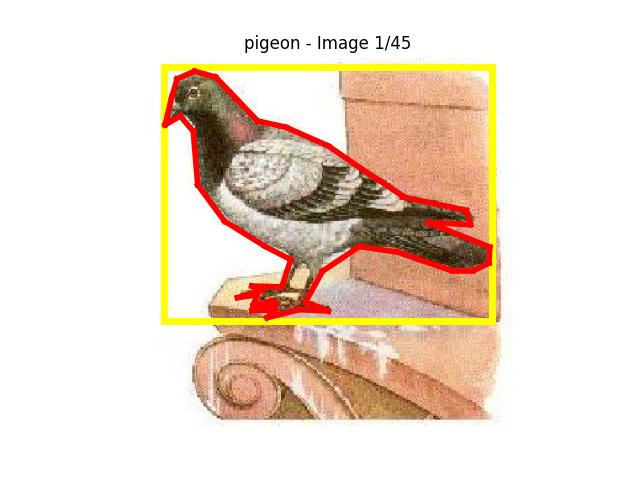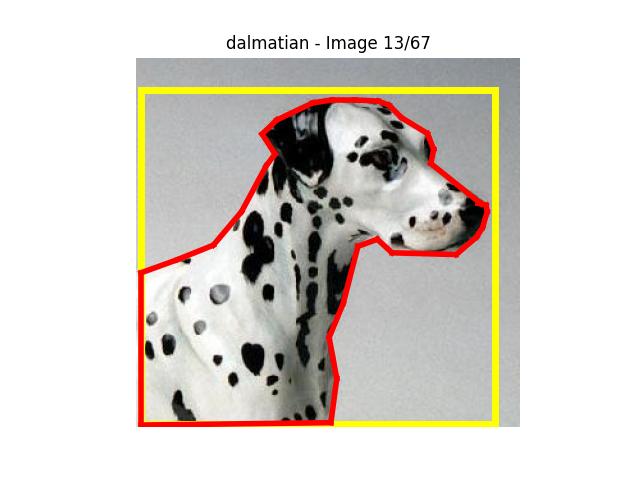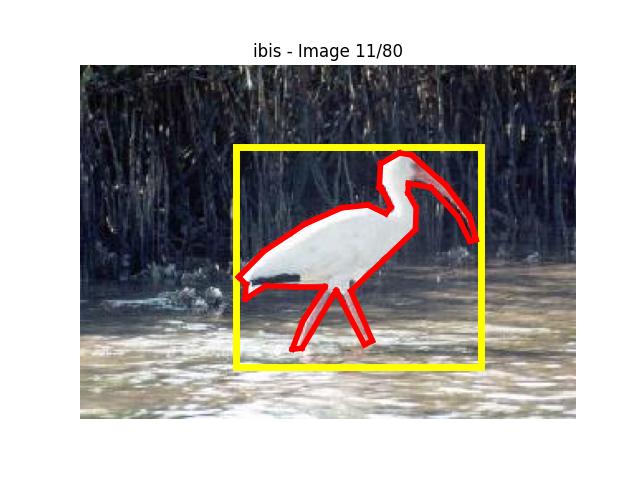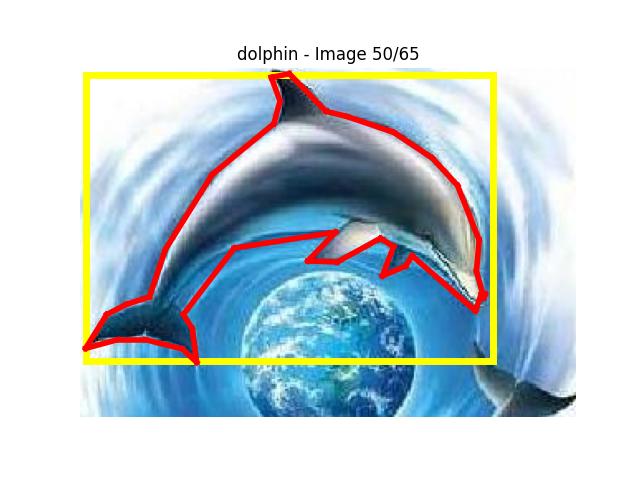Caltech Studies (paintings)
In "Caltech Studies," the viewer witnesses a historic moment: it marks the origin of current AI development. With this dataset, curated by Fei-Fei Li et. al., humanity began showing machines how we see and categorize the world. This poetic gesture, humans manually tracing animal contours to demonstrate image semantics to computer vision algorithms, resembles the fundamental pedagogical principle of explaining the world to a child.
.jpg)
Hawksbill 50 & Butterfly 3, PAIN && PLEASURE, DAM Projects Berlin, 2025
_Large (Large Portrait).jpg)
Wild Cat 19, The White Show, Nguyen Wahed Gallery, NYC, 2025
.jpg)
Pigeon, 60 x 60cm, Pigment paint on Aludibond, 2024
.jpg)
Butterfly 3, 60 x 60cm, Pigment paint on Aludibond, 2024
.jpg)
Wild Cat 19, 60 x 60cm, Pigment paint on Aludibond, 2024
.jpg)
Flamingo Head 30, 60 x 60cm, Pigment paint on Aludibond, 2025
.jpg)
Crocodile Head 3, 60 x 60cm, Pigment paint on Aludibond, 2025
.jpg)
Pigeon 1, 60 x 60cm, Pigment paint on Aludibond, 2024
.jpg)
Dalmatian 13, 60 x 60cm, Pigment paint on Aludibond, 2024
.jpg)
Ibis 11, 60 x 60cm, Pigment paint on Aludibond, 2024
.jpg)
Dolphin 50, 60 x 60cm, Pigment paint on Aludibond, 2024
.jpg)
Hawksbill 50, 60 x 60cm, Pigment paint on Aludibond, 2024
.jpg)
Exhibition view, Caltech Studies (right), PAIN && PLEASURE, DAM Projects Berlin, 2025
Caltech Studies represents a critical juncture in the evolution of machine vision. It marks
the
first systematic attempt to teach computers to "see" through a process where three scientists meticulously
traced the contours of objects in over 9,000 images. This manual annotation – the literal act of pointing
and declaring "here it is" – constitutes a fundamental moment of pedagogy between human and machine,
establishing the foundation for contemporary object recognition and artificial intelligence systems.
The particular significance of this historical dataset for my artistic practice lies in its methodological
approach of manual tracing using a computer mouse. For the past decade, my work has centered on an intensive
exploration of mouse movements as an artistic medium, examining them through the lens of information
aesthetics. The decision to now work with others' lines – specifically those drawn within a scientific
context – rather than my own, marks a significant evolution in my creative process: a movement from interior
to exterior, from personal to collective gesture.
A critical dimension of my investigation emerges in the inherent imprecision of these hand-drawn contours.
These "errors" transcend mere technical inadequacies to manifest as bias – an imprint of the dataset
creators' identity and perspective. This original bias propagates throughout the development of machine
learning, multiplying across derivative datasets and becoming an inextricable component of the system.
This observation leads to a fundamental critique of digitization and machine learning: in their statistical
essence, these systems aspire to a kind of "data democracy," a averaging and summarization that inevitably
eliminates peculiarities and anomalies. As a practitioner who has long operated at the intersection of
digital technology and artistic expression, I perceive this as a crucial loss: the reduction of vibrant,
unpredictable reality to digitally approximated models.
My project thus positions itself as a multidimensional reflection: simultaneously an homage to pioneering
work in computer vision, an examination of human gesture's role in artificial intelligence development, and
a critical interrogation of digital approximation's limitations. It seeks to render tangible the tension
between technological progress and the irreplaceable value of "authentic experience" through artistic means.
The work situates itself within the discourse of post-digital aesthetics while engaging with questions of
algorithmic bias and the materiality of digital processes. Through this investigation, I aim to problematize
the relationship between human annotation and machine learning, revealing the subjective traces within
seemingly objective systems.
Caltech Studies (realtime-eink)
.jpg)
Caltech Studies (realtime e-ink), PAIN && PLEASURE, DAM Projects Berlin, 2025
The hybrid nature of the e-ink medium is crucial to the conceptual dimension of the work.
Electronic paper can be positioned between traditional media and digital technology. Unlike conventional
screens, it emits no light, consumes minimal energy, and retains its image even without power.
In "Caltech Studies," the viewer witnesses a historic moment: it marks the origin of current AI development.
With this dataset, curated by Fei-Fei Li et. al., humanity began showing machines how we see and categorize
the world. This poetic gesture, humans manually tracing animal contours to demonstrate image semantics to
computer vision algorithms, resembles the fundamental pedagogical principle of explaining the world to a
child.
The interdisciplinary quality of the work lies in its simultaneously digital and analog nature. A computer
executes a real-time program generating never-identical constellations, while the framed "electronic paper"
exists in the interplay between digital display and analog medium. The work can be "paused" when power is
interrupted yet remains visible—a characteristic possessed by neither purely digital nor purely analog
media.
Running on a 43x73cm e-ink panel driven by custom software. The e-paper material is
similar to a classic computer screen, nearing 4k resolution but it doesn‘t emit light, is very energy
efficient and the image remains even when unplugged.
.jpg)
Exhibition view, Caltech Studies (realtime e-ink), PAIN && PLEASURE, DAM Projects Berlin, 2025
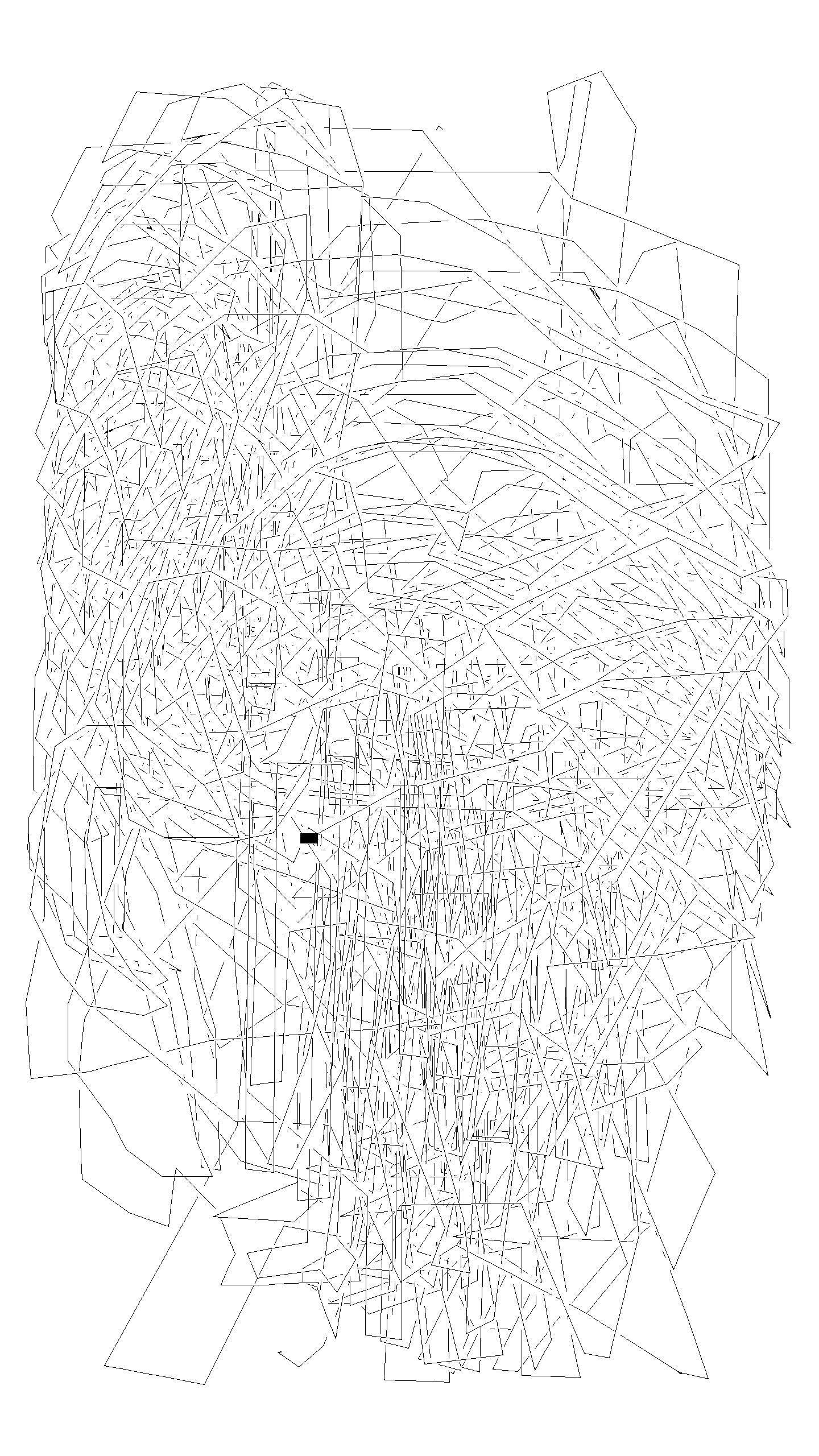
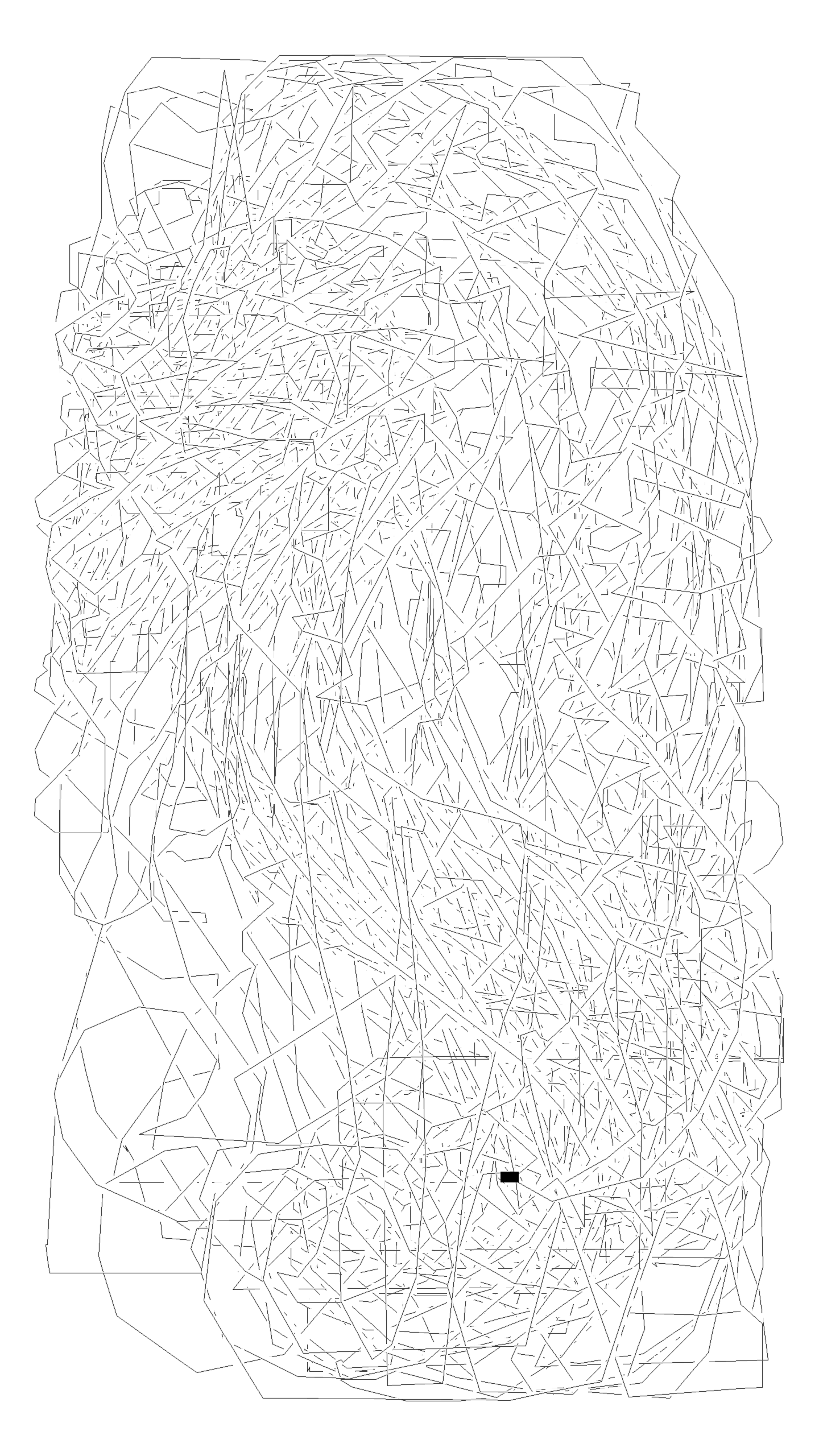

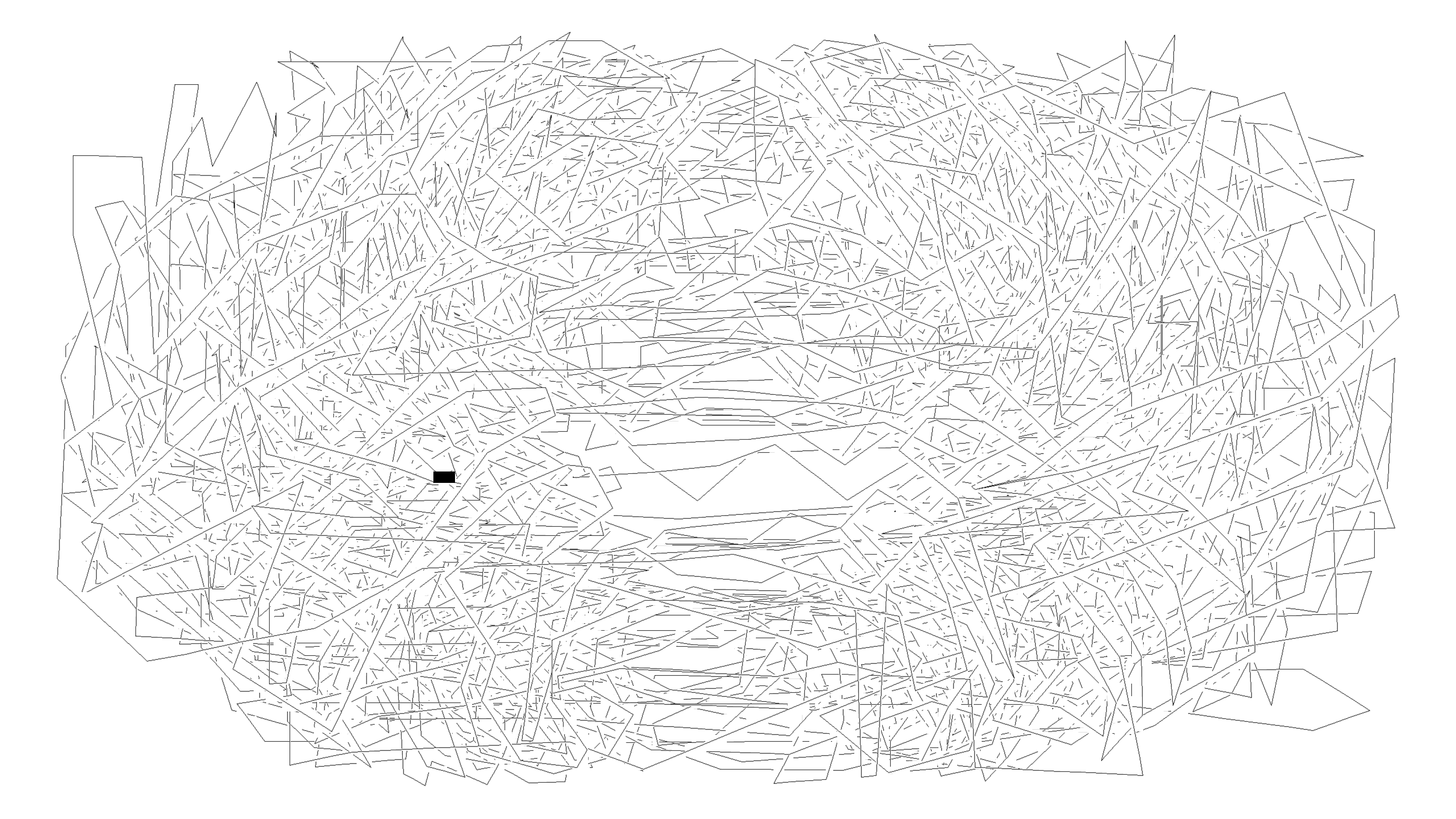
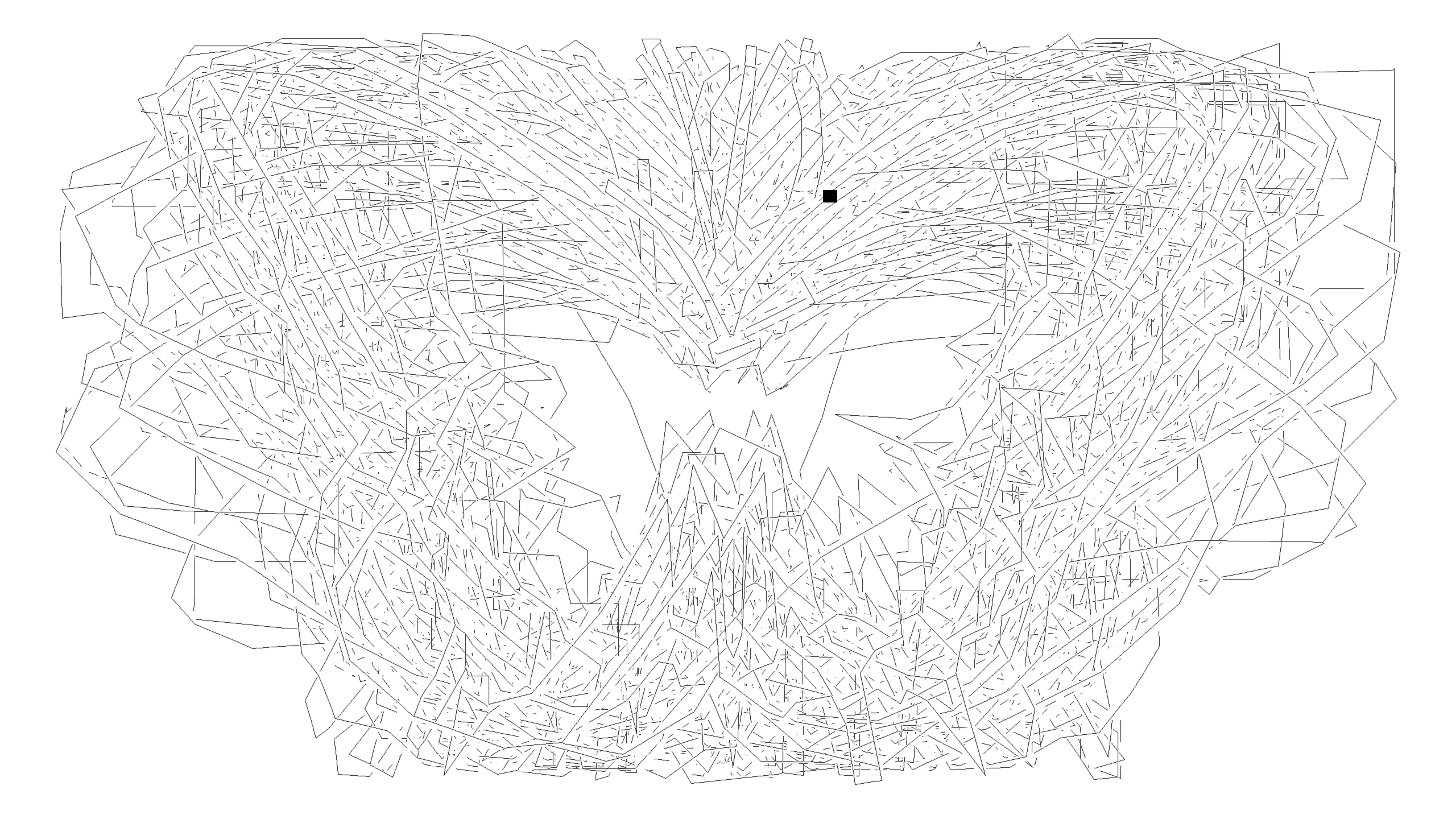
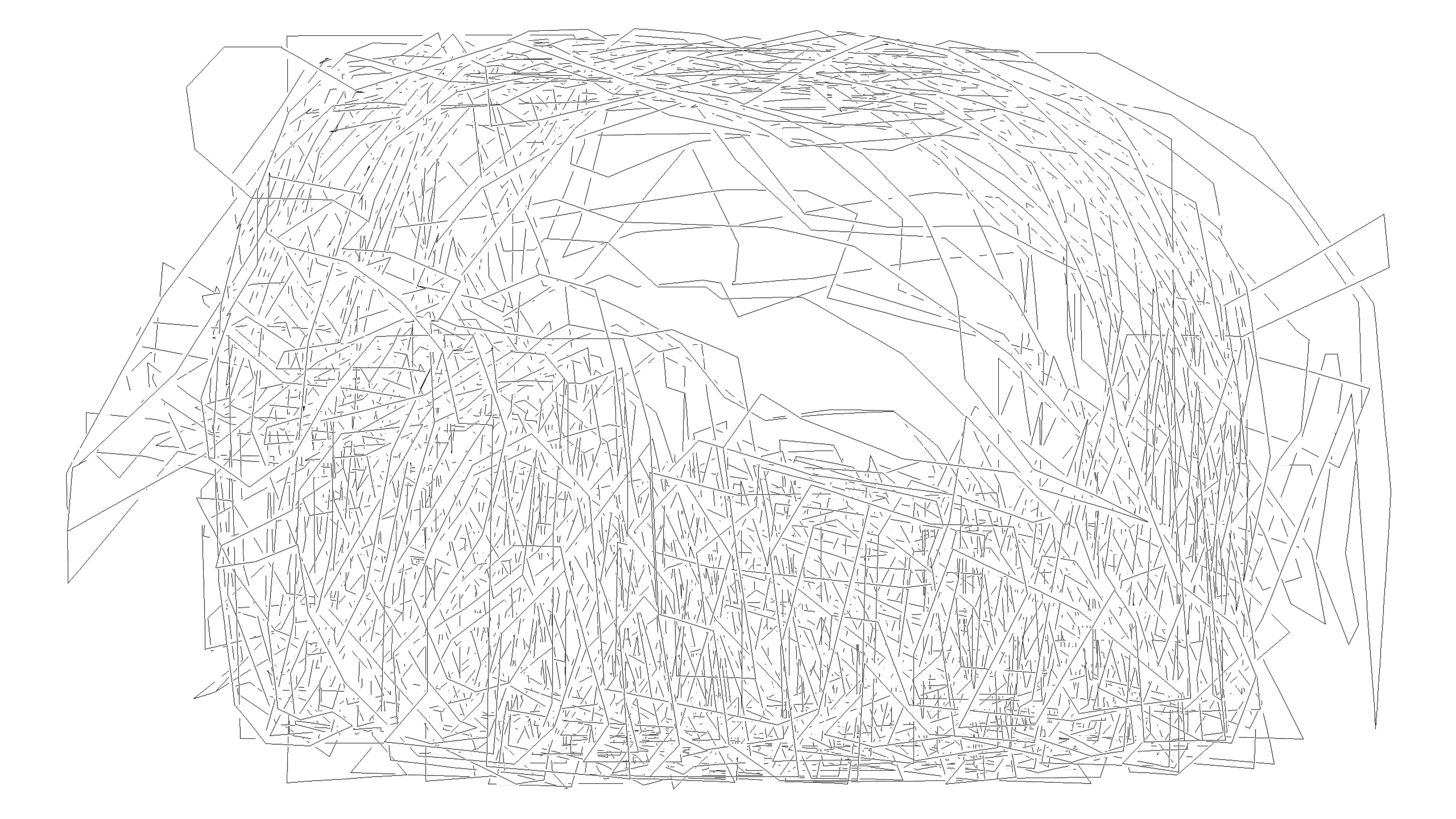
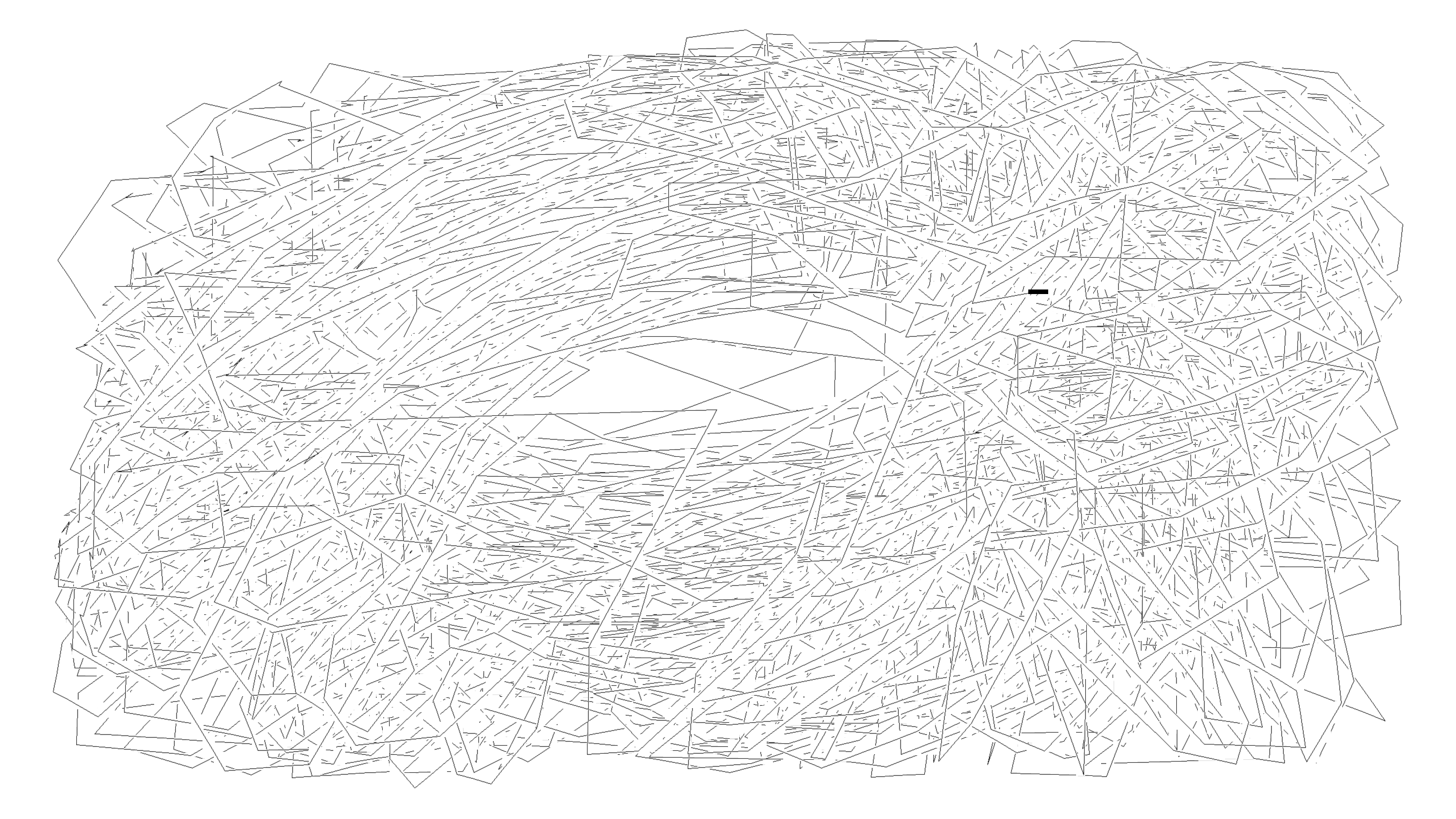
Caltech Studies (Plotter drawings)
All these plotter drawings have been created during the four days of the Chaos Communication Congress 38c3 in Hamburg, Germany end of 2024. Created using vintage plotters and original plotter pens from the 80s.
.jpg)
.jpg)
Caltech Studies on 2x HP7550 and 2x HP7475 plotters, created during the 38c3 (Chaos Communication Congress), 2024
.jpg)
Exhibition view, Caltech Studies plotter drawings (right), PAIN && PLEASURE, DAM Projects Berlin, 2025
.jpg)
Caltech Studies plotter drawings (38c3), PAIN && PLEASURE, DAM Projects Berlin, 2025
.jpg)
Cougar Body 3, 42 × 29,7 cm, plotter drawing, 2024
.jpg)
Gerenuk 10, 29,7 × 42 cm, plotter drawing, 2024
.jpg)
Rooster 40, 29,7 × 42 cm, plotter drawing, 2024
.jpg)
Gerenuk 25, 29,7 × 42 cm, plotter drawing, 2024
.jpg)
Bass 1, 29,7 × 42 cm, plotter drawing, 2024
.jpg)
Crayfish 29, 29,7 × 42 cm, plotter drawing, 2024
.jpg)
Crocodile 1, 29,7 × 42 cm, plotter drawing, 2024
.jpg)
Butterfly 3, 29,7 × 42 cm, plotter drawing, 2024
.jpg)
Butterfly 16, 29,7 × 42 cm, plotter drawing, 2024
.jpg)
Butterfly 26, 29,7 × 42 cm, plotter drawing, 2024
.jpg)
Butterfly 66, 29,7 × 42 cm, plotter drawing, 2024
.jpg)
Hawksbill 8, 29,7 × 42 cm, plotter drawing, 2024
.jpg)
Hawksbill 28, 29,7 × 42 cm, plotter drawing, 2024
.jpg)
Hawksbill 50, 29,7 × 42 cm, plotter drawing, 2024
.jpg)
Hawksbill 81, 29,7 × 42 cm, plotter drawing, 2024
.jpg)
Pigeon 1, 29,7 × 42 cm, plotter drawing, 2024
.jpg)
Pigeon 7, 29,7 × 42 cm, plotter drawing, 2024
.jpg)
Pigeon 20, 29,7 × 42 cm, plotter drawing, 2024
.jpg)
Pigeon 31, 29,7 × 42 cm, plotter drawing, 2024
.jpg)
Buddha 8, 29,7 × 42 cm, plotter drawing, 2024
.jpg)
Rooster 15, 29,7 × 42 cm, plotter drawing, 2024
.jpg)
Rooster 36, 29,7 × 42 cm, plotter drawing, 2024
.jpg)
Rooster 45, 29,7 × 42 cm, plotter drawing, 2024
.jpg)
Platypus 9, 29,7 × 42 cm, plotter drawing, 2024
.jpg)
Platypus 13, 29,7 × 42 cm, plotter drawing, 2024
.jpg)
Platypus 20, 29,7 × 42 cm, plotter drawing, 2024
.jpg)
Gerenuk 22, 29,7 × 42 cm, plotter drawing, 2024
.jpg)
Gerenuk 1, 29,7 × 42 cm, plotter drawing, 2024
.jpg)
Ibis 18, 29,7 × 42 cm, plotter drawing, 2024
.jpg)
Panda 16, 29,7 × 42 cm, plotter drawing, 2024
.jpg)
Wild Cat 33, 29,7 × 42 cm, plotter drawing, 2024
.jpg)
Water Lilly 1, 29,7 × 42 cm, plotter drawing, 2024
.jpg)
Llama 18, 29,7 × 42 cm, plotter drawing, 2024
.jpg)
Leopards 26, 29,7 × 42 cm, plotter drawing, 2024
.jpg)
Laptop 1, 29,7 × 42 cm, plotter drawing, 2024
Caltech Studies (braille)
.jpg)
Exhibition view, Caltech Studies (braille), The White Show, Nguyen Wahed Gallery, NYC, 2025
.jpg)
Wild Cat 5
braille embossing
29.7x42 cm/11.69x16.53in
.jpg)
Crocodile 1
braille embossing
29.7x42 cm/11.69x16.53in
.jpg)
Elephant 19
braille embossing
29.7x42 cm/11.69x16.53in
.jpg)
Dolphin 47
braille embossing
29.7x42 cm/11.69x16.53in
.jpg)
Ant 35
braille embossing
29.7x42 cm/11.69x16.53in
.jpg)
Rooster 44
braille embossing
29.7x42 cm/11.69x16.53in
.jpg)
.jpg)
Exhibition view, Caltech Studies (braille), The White Show, Nguyen Wahed Gallery, NYC, 2025
Using traditional braille printing technology, Schwittlick transforms the scientists' mouse
movements into tactile compositions through the mechanical precision of the braille embosser - typically
used for transcribing text - which here becomes a tool for rendering digital gestures into a haptic format,
creating works that cannot be seen but touched. Accompanying each braille work is a digital counterpart
where source code preserves the exact instructions sent to the braille machines first developed in the
1980s.
The links below are real-time audiovisual digital work with machine drawing instructions, inscribed as
ordinals on BTC. (left-click for interaction)
All 20 inscriptions can be found here
Rooster 44
🐢Hawksbill 67
🐟Rooster 44
🐜Ant 35
⭐Rooster 44
🐘Elephant 19
🐙Octopus 27
🐆Leopard 111
🐈Wild Cat 5
🐊Crocodile 1
🐬Dolphin 47
🕊Pigeon 23
🦀Crab 19
🦋Butterfly 73
🦏Rhino 7
🦕Brontosaurus 17
🦘Kangaroo 33
🦙Llama 29
🦩Flamingo 59
🧸Panda 24
Process
.jpg)
.jpg)
.jpg)
.jpg)
.jpg)
.jpg)
.jpg)
.jpg)
.jpg)
